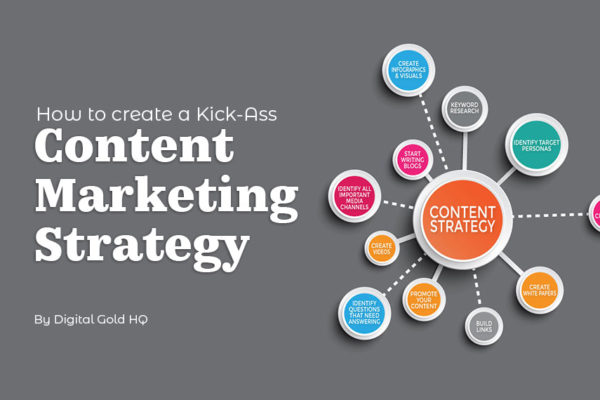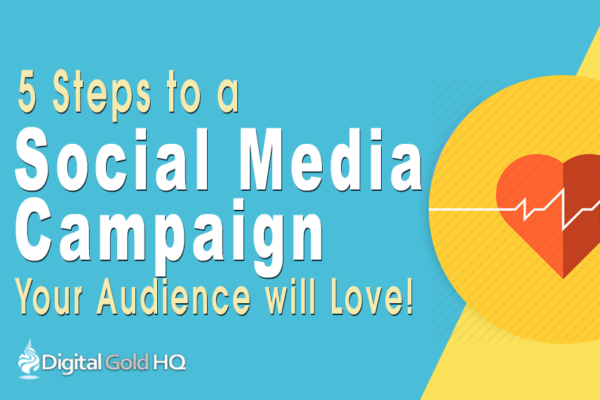3 Surefire Ways to Make Your Digital Marketing Strategy Pop

So, you consider yourself a trailblazing entrepreneur, right? You’ve had the courage, nay, the balls to defy the naysayers and launch your own business. And here you are, living the dream, throwing your all into making your business a success. So what’s your next biggest challenge?
Most new entrepreneurs struggle immensely with obtaining steady and consistent growth in their first year of business. Growth in sales. Growth in customers. Growth in profit margins. And this is where your brilliant digital marketing strategy comes into play and is worth it’s weight in gold.
Your digital marketing strategy maps out a clear pathway to your success. It defines exactly how you’re going to find more valuable customers and how you’re going to sell more products. And it defines your channels of choice (based on your customer habits), your engagement strategy, and how you intend to drive more traffic to your website and convert that traffic into happy, loyal customers.
We’ve already discussed why you need a digital marketing strategy, and we’ve outlined three core issue your digital marketing strategy should address. Now let’s look at three things you can do that’ll make that digital marketing strategy much more effective for you and your team.
1. Embrace Specificity and Write It All Down
It’s all very well having a rough idea of general marketing activities in your head. But a goal not written down is just a dream. Have you tried actually writing down your digital marketing strategy in a planning document? Yes, pen and paper, tablet or desktop, whatever tickles your fancy. Get specific. What would you like to achieve? Who are you targeting? When do you want to start and when should you finish? How much do you want to spend? And who will be responsible for executing each aspect of the plan? How will you know when you’ve been successful? At what point will you pull the plug if it doesn’t go to plan? Write it all down and set out exactly which digital marketing methods you will use, identify the relationships between them and map out the ways in which each digital marketing activity will complement the other.
2. Apply the Lessons You Have Learned
Look back carefully over your last quarter, or last year. What sort of digital marketing campaigns did you try? Chances are, if you look at your results – ideally with the help of a tool such as Google Analytics – you will find some lessons to apply to your new strategy. Look closely at what worked well for you and make sure you understand exactly why it worked so that you can replicate more of the same. Conversely, look closely at your marketing spend to identify activities that yielded poor returns. Were your ads poorly targeted? Were your creatives off-brand or unappealing? Most importantly, are you failing to engage with the right audience? Be critical of your output, and make cuts where necessary.
Another great idea is to examine the successful digital marketing campaigns or key players in your industry. Take a close look at their visuals, ad copy, targeting and retargeting methods. Look at the players in your local area as well as global players across world. Find a brand that you can say “that’s me in 5 years” and track their digital marketing activities. Are you inspired by what you see? Are you brimming with ideas that you think will work for your brand? Are these ideas scalable and likely to deliver proportionally increased results? Write them down, plan your strategy, execute your plan.
3. Connect Digital and Traditional Marketing Methods
So, you’re off to a good start. You’re documenting your goals, applying your lessons learned, and brimming with inspiration from trailblazers ahead of you. Now you need to skyrocket your ideas and unleash your digital marketing mastery. Here’s the thing. In much the same way that the different elements of a digital marketing strategy will work better when synchronised (e.g. keyword-rich content will boost both social and organic search rankings) – so too will they work well when combined with traditional marketing methods.
As an example, McDonalds once made the decision to extend the opening hours of some branches into the late night. To promote this to a targeted audience, they developed a mixed physical and digital advertising strategy. They placed posters in places where people who tended to be out late at night often found themselves – notably petrol stations – as well as placing mobile banner adverts on sites that people tended to visit with their phones when out at night. Both the physical posters and digital banner ads then funnelled into another digital element – an app allowing people to find their nearest open branch – which then drove an extra half a million customers into physical stores. Traditional and digital marketing worked together, and both became more powerful.
It might mean that you work with journalists to get your product featured in popular newspaper and magazines, or that you attend networking events, trade shows or even festivals. Know anyone in radio? Get yourself interviewed. In contact with your university alumni? Feature in their print magazine and give a presentation at their next reunion/Christmas Dinner/New Year’s get together. Hand out your new business cards to everyone you meet and tap into your network of contacts to help spread the word.
If growth is truly your goal, look for every opportunity to spread the word about your brand and get your name out there. And wherever you are, drive all of you new contacts to your website and social channels, offer incentives to engage with your brand through competitions, polls, surveys and the like. And reward your prospects and customers with content, products, or information that they will value and enjoy.
I hope you found this helpful. Do let me know your thoughts and experiences on the subject by commenting in the box below. And if you’d like expert advice on your digital marketing strategy, do get in touch.
Enjoy!




